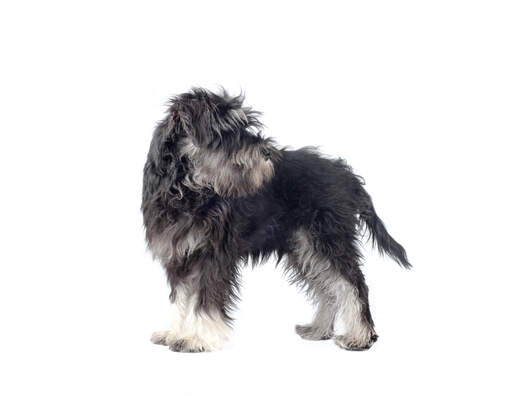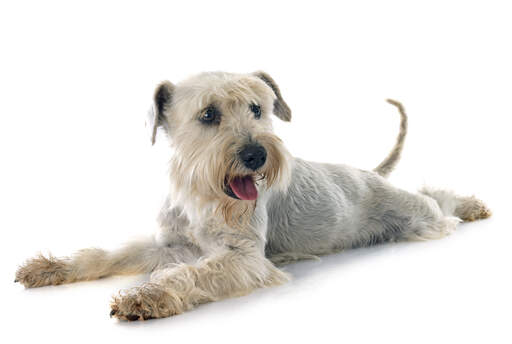Dværgschnauzer hund













History
The Miniature Schnauzer was first bred in the late 1800's in Germany. It was developed by crossing a standard Schnauzer with Affenpinscher and Poodle to produce a good rat catching dog and excellent guard dog. All Schnauzers get their name from one dog, called Schnauzer, who was exhibited around the 1880's. Schnauzer means 'small beard'. Both the standard and miniature were exhibited as the same breed until 1933, when they became classed as separate and are now in different classes for showing.
Behaviour
Schnauzers are playful and alert dogs. They tend to bark a lot when they hear a noise and are tenacious when it comes to searching out small furry creatures when out on a walk. They are very trainable and quick to learn, but can be stubborn at times. Being the least stubborn of all Terriers, they do still need a firm hand and regular training. They are friendly towards other dogs and strangers and generally good with children - possibly with other pets if introduced slowly. They tend to be more barkers than biters and are less aggressive than most Terriers. They are very playful dogs and can take a while to settle down into adulthood. They act like puppies for the first couple of years but do settle down.
They have lots of energy and will need regular walks to keep them stimulated. If they get bored they will invent their own fun, usually chewing something of yours. Schnauzers always do well in agility competitions/Flyball and love pleasing their owners. They are affectionate towards people, will follow you, want to be involved with family activities and love cuddles on the sofa. They expect to sleep on your bed, usually after they have dug a hole in your garden.
Schnauzers need clipping or stripping a couple of times a year and brushing 2 - 3 times a week. Stripping is usually reserved for show dogs and pets are clipped. They are sometimes referred to as non-moulting dogs, which isn't true. However, moulting is minimal and barely noticeable, so excellent for the house proud. A generally healthy breed, but Schnauzers should have their ears dried after swimming as they can be prone to ear infections.
Temperament
Miniature Schnauzers have a playful and companionable temperament. Individuals vary a lot with some being very playful and others being quite disinterested. Most do however love a good walk followed by a snooze in their favourite bed.
They are happy enough around new people and animals but many couldn't care less about meeting newcomers. They will love their families whole heartedly and make good watchdogs.
Health Problems
Health problems that may affect Miniature Schnauzers includes canine hip dysplasia (CHD), luxating patellar (dislocation of the knee cap), Legg-Calve-Perthes disease (breakdown of the femoral head which can cause lameness and joint swelling), cataracts, urinary stones, digestive diseases, metabolic diseases, blood clotting disease, skin problems and diabetes.
Breed Details
- Status: Common
- Life Expectancy: 12 - 14 years
- Weight: 5 - 8.2 kg
- Højde: 12 - 14"
- Rare: Nej
- Coat: Medium
- Grooming Requirements: More than once per week
- Town or Country: Either
- Minimum Home Size: Flat
- Minimum Garden Size: Small to Medium Garden
- Breed Type: Companion Dog
- Størrelse: Lille
- Energy Level: Medium
- Exercise Required: Up to 1 hour

















